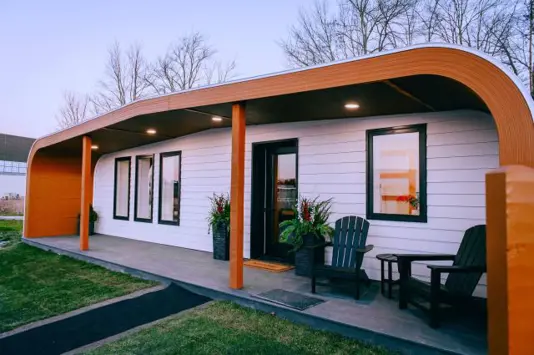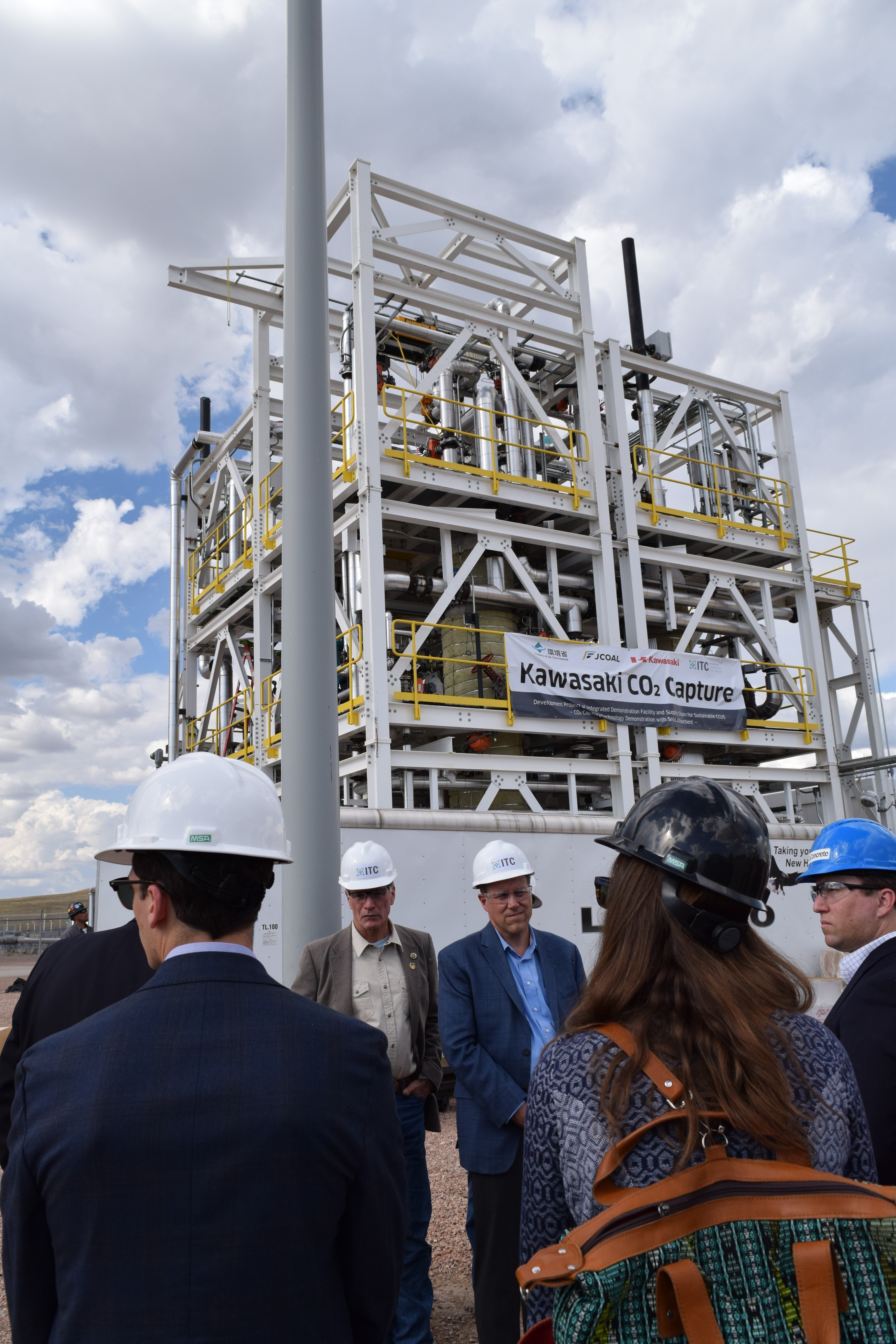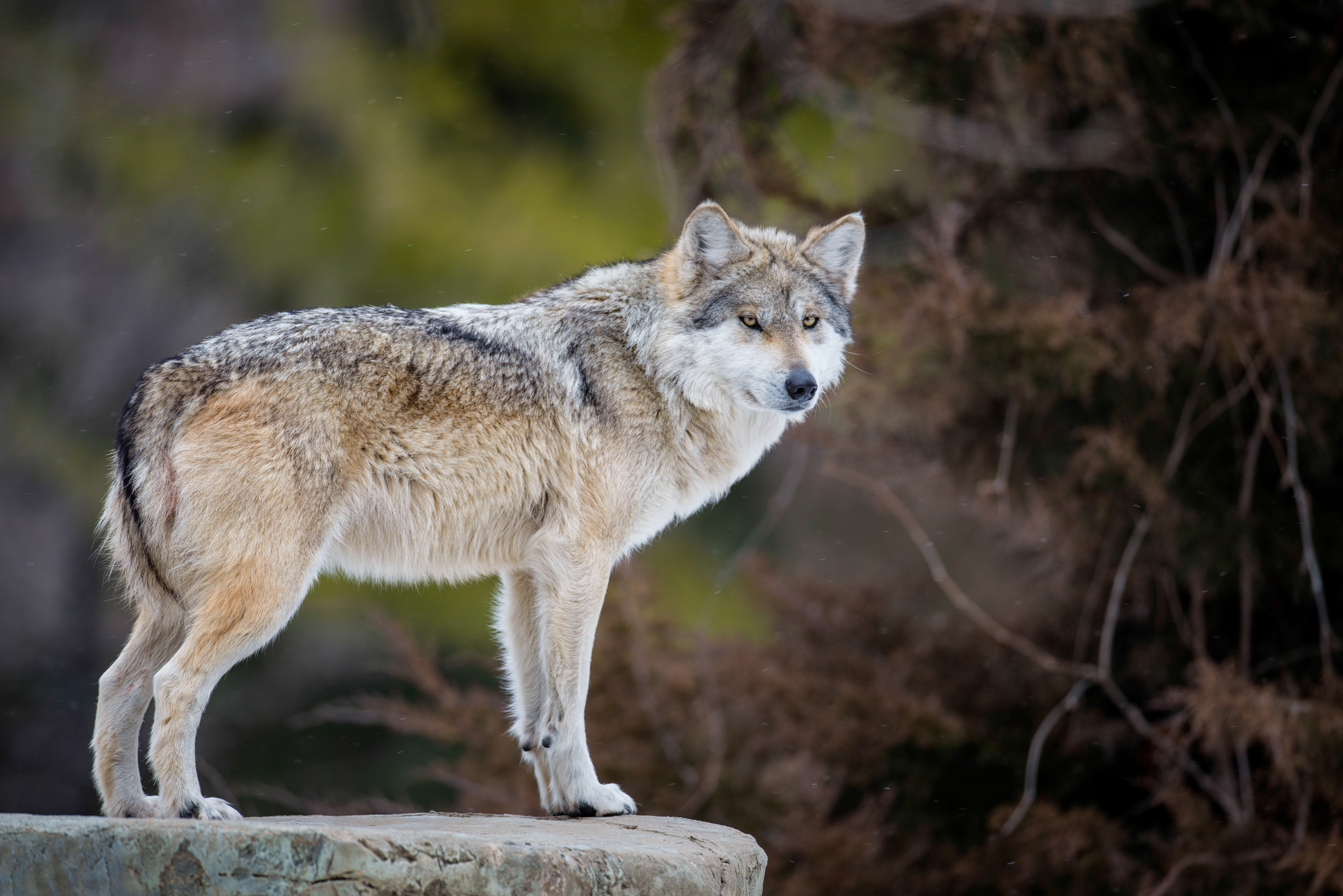10/19/23
Best of the West: 3D printed houses; A roadmap to decarbonization; Wildfire relief; Education grants in Idaho; An insurance policy for biodiversity
The Western Governors' Association keeps you updated on the latest news in the West. Here are the top stories for the week starting Oct. 16, 2023. (Photos courtesy of alquist3d, Carolina A. Miranda, and The Cool Down).
According to the Real House Price Index (RHPI), housing affordability is the worst it’s been in over three decades. Paired with 7%-plus mortgage rates, the housing crisis now seems ubiquitous throughout the West. In September 2023, the Fannie Mae Housing Survey reported that 84% of consumers believe that it’s a bad time to buy a home.
The prospect of quickly developing new affordable housing, however, is being buoyed by 3D printing.
Austin, Texas-Based ICON, which partnered with a housing non-profit called New Story to build the first permitted 3D-printed home in the United States in 2018, has been busy perfecting its 3D printing technology by building homes in Nacajuca, Mexico for local families dealing with extreme poverty. It also worked with Community First, to develop affordable and permanent residences for the chronically unhoused.
Now the company is working on what it calls, “The Genesis Collection,” a new community in Georgetown, Texas exclusively comprised of 3D-printed homes. The 100 houses will encompass eight different floorplans between 1,500 to 2,100 square feet, are solar-powered, and start at $475,000.
Their technology has been so successful that ICON has even partnered with NASA about the prospect of 3D printing homes on the moon.
 Using similar technology, students from the School of Architecture at Woodbury University in California recently completed the Solar Futures House, which began as an entry in the Solar Decathlon, a national collegiate competition organized by the U.S. Department of Energy that encourages budding designers to create high-performance structures powered by renewable energy. Constructed out of concrete in just three days using the latest 3-D printing technology from Emergent, a 3-D printing construction firm based in Redding, it is the first such permitted 3D printed home in the city of Los Angeles.
Using similar technology, students from the School of Architecture at Woodbury University in California recently completed the Solar Futures House, which began as an entry in the Solar Decathlon, a national collegiate competition organized by the U.S. Department of Energy that encourages budding designers to create high-performance structures powered by renewable energy. Constructed out of concrete in just three days using the latest 3-D printing technology from Emergent, a 3-D printing construction firm based in Redding, it is the first such permitted 3D printed home in the city of Los Angeles.
 Researchers from the University of Maine recently completed a 600-square-foot recyclable 3D-printed home made from wood fibers and sawmill waste, known as bio-resins. The design, completed in just four days, is part of a project to create a “factory of the future” for sustainable, eco-friendly homes.
Researchers from the University of Maine recently completed a 600-square-foot recyclable 3D-printed home made from wood fibers and sawmill waste, known as bio-resins. The design, completed in just four days, is part of a project to create a “factory of the future” for sustainable, eco-friendly homes.
WIth a similar mission to limit the use of carbon intensive-concrete, Mighty Buildings, a 3D printing construction company from California, partnered with Fortera, which produces eco-friendly cement and reduces harmful carbon pollution by 60% compared to traditional cement.
Japanese startup, Serendix, recently combined 3D printing and CNC machining, a subtractive manufacturing process that typically employs computerized controls and machine tools to produce a custom-designed part, to build a house for the cost of roughly $37,600. Serendix CEO Kunihiro said the company’s goal is to fully automate the housing industry — much like Japan did with the auto industry more than 40 years ago.
“The house of the future costs as much as a car,” Handa told Fast Company.
Alquist 3D, which created the nation's first 3D-printed owner-occupied home in 2021, announced it is moving to Colorado to expand its operations to include a new showroom and production facility to print housing and other infrastructure. Company leaders said they chose Colorado for the expansion — over the other contenders, Iowa and Virginia — because of the state's commitment to developing affordable housing.
“There is nowhere else on the planet where so much is happening all in one place to move structural 3D printing forward,” said Alquist 3D founder Zachary Mannheimer. “We’re excited to have a home where all the pieces of the puzzle to commercialize this industry are coming together. We’re thankful to Colorado for sharing in this vision.”
Decarbonization: A new report from the National Academies of Sciences, Engineering, and Medicine made 80 recommendations for how the United States can justly and equitably pursue decarbonization policies. It includes recommendations for everything from establishing a carbon tax to phasing out subsidies for high-emissions animal agriculture and codifying environmental justice goals.

Learn more about the project and other carbon capture technologies by watching the Gillette Workshop of Governor Gordon’s Decarbonizing the West initiative.
Wildfire Relief: Thanks to the abnormally large snowpack last winter and a wet spring, the number of acres burned by wildfires in the United States this year is far below recent years. Toward the end of last month, some 2.4 million acres had burned in the U.S. That’s nearly 4.5 million fewer than the same period last year, and roughly 40% of the 10-year average, according to data provided by federal fire officials. However, Basil Newmerzhycky, lead meteorologist at the Great Basin Coordination Center in Salt Lake City, cautioned that a light, wet fire season can be a “double-edged sword,” as some of the heavier fire seasons in recent years came on the heels of two or three seasons of cooler, wetter conditions.
“It provides relief for that immediate time period, but it also grows fine fuels in the lower and middle elevations,” he said. “The grasses, the sagebrush multiply in terms of coverage and depth and tons per acre. And then when you finally get that regular dry summer – and it doesn't even have to be abnormally dry – you have an overabundance of fuels that then provide for an above-normal fire season.”
Education Grants: Idaho Governor Brad Little recently celebrated the opening of applications for a new postsecondary grant program entitled Idaho LAUNCH, which could provide financial aid for 9,000 to 10,000 high school graduates pursuing in-demand careers. Those accepted will receive grants of up to $8,000, or 80% of tuition or fees. High school seniors can apply through April 15.
 Biodiversity Insurance Policy: A new initiative from the U.S. Fish and Wildlife Service is collecting endangered wildlife cell samples and cryogenically freezing them for the possibility of cloning at-risk species in the future. Dubbed 'biobanking,' the collaborative effort has identified 24 endangered animals whose tissue collections will be stored in one of two DNA lending libraries at the San Diego Frozen Zoo in California or in the National Animal Germplasm Program facility in Fort Collins, Colorado, and kept at minus 196 degrees Celsius for future use. Samples have been collected from the Mexican wolf, Sonoran pronghorn, Preble's meadow jumping mouse, the Florida bonneted bat, northern bog lemming, the Wyoming pocket gopher, and the Santa Catalina Island fox.
Biodiversity Insurance Policy: A new initiative from the U.S. Fish and Wildlife Service is collecting endangered wildlife cell samples and cryogenically freezing them for the possibility of cloning at-risk species in the future. Dubbed 'biobanking,' the collaborative effort has identified 24 endangered animals whose tissue collections will be stored in one of two DNA lending libraries at the San Diego Frozen Zoo in California or in the National Animal Germplasm Program facility in Fort Collins, Colorado, and kept at minus 196 degrees Celsius for future use. Samples have been collected from the Mexican wolf, Sonoran pronghorn, Preble's meadow jumping mouse, the Florida bonneted bat, northern bog lemming, the Wyoming pocket gopher, and the Santa Catalina Island fox.
"Cryogenically preserved cell culture samples are an insurance policy against future losses of biodiversity in the wild," Seth Willey, deputy assistant regional director of ecological services for the Fish and Wildlife Service’s Southwest Region, said.